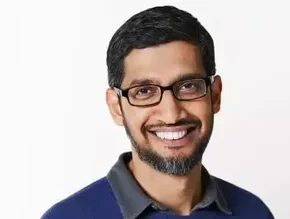What is photonic processing and why does it matter for AI?

If it was ‘bias’ in 2020, ‘deep learning’ in 2019 and ‘training data’ in 2018’, the watchword of 2021, in AI terms, is ‘photonic processing’.
Who? Well, we’ll come to that, but photonics is the use of light – rather than electrons – to run data. And, among its many other qualities, light is FAST. It is also nifty in a number of other ways that have applications in artificial intelligence.
Let’s take a look.
What is photonic processing?
Photonic processing uses light instead of conventional electronics to process data. A standard microprocessor processes data in a serial fashion, one process at a time. Over the years, processors have adapted to overcome bussing bottlenecks – multi-core processors and GPUs are examples of this. But photonic processing – or photonic computing, or optical computing – uses light instead. And just as light floods the sky, while lightning cuts just a slice, photonic computing has potential that goes beyond the physical properties of electricity.
What are the benefits of photonic processing?
Where do we start? It’s faster. Potentially much, much faster than conventional electronic processing. It is also more efficient, drawing less power and creating less heat. And researchers from George Washington University discovered in 2020 that by using different wavelengths, photonic processors could transact multiple pieces of data simultaneously, a process known as wavelength division multiplexing. Theoretically at least, photonic processing allows for computation at the speed of light.
Why is photonic processing important for AI?
The scale of data processing needed for data analysis in machine learning is vast. The end calculations require constant access to the cache memory, which creates a bottleneck. AI is, in computational terms, expensive. It’s also slow. Photonic processing might unblock the whole process, being able to collect, process and store data at previously impossible speeds, while drawing less power. As 5G and edge computing come together to bring us more data, faster, it is a potentially transformative technology.
What happens next in photonic computing?
Photonics is likely to be used in tensor processing units (TPUs), a type of processor dedicated to the data demands of machine learning (think GPU but for massive multi stream data crunching rather than graphics). Scientists from the Universities of Oxford, Münster, Exeter, Pittsburgh, École Polytechnique Fédérale (EPFL) and IBM Research Europe have developed a new approach and processor architecture which could pave the way for commercially available speciality prototypes and production models.






